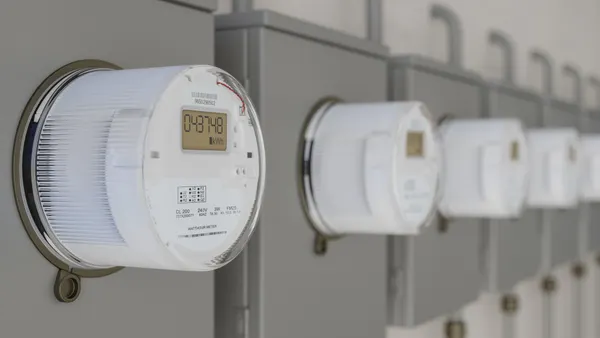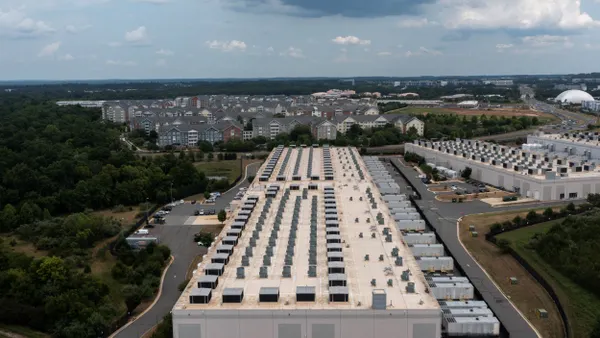Last month, the City and County of Honolulu rolled out its first Climate Action Plan (CAP) — just one example of the "grunt work" cities have done to achieve the goals of the Paris agreement in the absence of federal leadership over the last four years, said Honolulu's Chief Resilience Officer.
The aggressive plan, which is open for public comment before being finalized, includes nine climate strategies with 46 specific climate actions to occur over the next five years, all to reduce local greenhouse gas emissions (GHG) 44% by 2025. The roadmap also intends to put Honolulu on a path to carbon neutrality by 2045.
Created in partnership with the University of Hawaii, the CAP was informed by input from specialists, agencies, business and nonprofit leaders, and even a citizen-engagement game aptly titled "The Climate Game."
Smart Cities Dive caught up with Gonser to discuss the unique climate challenges the city and county faces, the associated costs of Honolulu's ambitious goals and more.
The following interview took place on Jan. 19 has been edited for clarity and brevity. President Joe Biden signed an executive order to re-join the Paris agreement on Jan. 20.
SMART CITIES DIVE: President-elect Joe Biden has plans to re-sign the Paris agreement on "Day One" in office. What will that mean for Honolulu?
MATTHEW GONSER: It's difficult to tell at this point. We've already been having initial discussions with our congressional delegations both in the Senate and Congress, getting more aware of what just passed through the appropriations bill and the second stimulus package. There's obviously stories out there about additional intentions to bolster and link economic recovery, COVID response and prosperity along with the climate action needs.
It's really evident from the individuals who have been identified to be appointed in various leadership roles — their understanding and acknowledgement that local leadership has really driven the discussion for the last four years — that they are open to partnerships and learning where the needs and opportunities are.
It's really great to see someone like Mayor Pete, who has a great understanding of what it takes to lead and make decisions at the local level, get better connected with transportation. And finding ways that all of the things around smart communities and healthy communities — whether it's complete streets, electrified transportation, making sure that our public spaces are places that encourage and promote economic prosperity and health — are all great signals for the opportunities that are potentially to come down to the local level from the federal government.
The original goals of the CAP were directly informed by hundreds of residents who engaged in a "climate game" to prioritize policy actions. Can you explain what the game and those learnings were?
GONSER: Yeah, that was good fun... Oh man, the things we miss from being able to do in-person public engagement.
That was at the tail end of 2018 into early 2019. We held 12 public community meetings, and these were in partnership with the area council members. So we have nine city council districts, [and] we partnered with the two major universities, Hawaii Pacific University and the University of Hawaii.
This was phase one of the engagement, sharing information on what a CAP is [and] what it requires. And starting to have the discussions on pros, cons, trade-offs, benefits, interests, and appetite on a whole array of potential climate actions and measures to address the main sectors of emissions, buildings, transportation [and] waste management.
And even though some of those things are potentially outside of the city's jurisdiction — aviation in particular, as well as marine transportation — these were the first discussions to help people think about different time horizons, and what it actually takes to drive emissions down to zero. So through those meetings, we were able to get a sense of what things people are most aware of, believe in, interested in, [and] willing to support in the near-term.
Can you explain how the specifics of the game worked?
GONSER: The specific [components included] tiles, and each tile represented the same sort of quantitative emissions reduction.
As we charted our collective island-wide emissions down to zero, you had to play a certain number of tiles. There were some limitations and restrictions, particularly around vehicles... You could go all in on electric vehicles (EV), or you had to think of some hybridization of vehicles. You could play X number of solar PV, but there are limitations because there's only a certain number of routes, so you can't assume you're going to eliminate all of the emissions just by putting PV on every rooftop. So people had to really think [it] through. They had a table that listed feasibility technology, potential benefits [and] potential consequences.
The important thing was going around the island and doing these in different geographies. [There were] different appetites for onshore wind, or large utility scale solar farms didn't always jive with community sentiment in any particular region. That's why it's really important to get that initial reaction so that when we are engaging with the utility, when we are reviewing projects, when we're thinking of the opportunities to carry any of this forward, we are acutely aware of community sentiment, for even proposing projects or ideas.
The CAP outlines nine strategies for achieving a 44% reduction in GHG emissions by 2025. Which of those nine strategies do you think will be among the most challenging to implement, and why?
GONSER: On the challenging side, we know waste diversion and promoting waste prevention is a challenge for an island community that's rather dependent on imports. And those imports oftentimes bring packaging and all these things that we're just sort of left with to deal with.
What are the things that we can do locally to ensure that we are either eliminating that from our waste stream or diverting it for different uses? We have a current disposable foodware ordinance that took effect on Jan. 1. Although it's currently in a three-month grace period, the rules are being finalized, acknowledging that it takes time for companies and businesses to get through their materials and can sometimes be an economic burden on the transition...it's been a work in process. But we acknowledge that the COVID economic crisis has made that challenging for small businesses.
So again, thinking about the things that we don't necessarily have direct leverage or influence over, potentially making it harder for us to manage our resources. Continuing to eliminate these single-use plastics is going to be really important both on the waste side, but also on public health and environmental health, looking at our procurement policies to make sure that we are buying the best to make sure that we're not unduly contributing to the emissions from the waste sector.
Although there was a steady decline in Honolulu’s emissions between 2005 and 2016, the CAP reports those levels have started to increase again—rising 0.1% in 2017 and jumping again by 1.8% in 2018. Why did this occur, and how does the plan intend to address it?
GONSER: Right. From the inventory, it looks like that it's mostly from the transportation sector, primarily ground transportation and aviation. Obviously, individuals and consumers are quite responsive to the price of gas and oftentimes quite responsive to the kinds of vehicles that they'll purchase. We have steady both truck and SUV purchases and registrations here on Oahu and across the state. So that's something that we're obviously trying to better understand.
And really support — whether it's through incentives or keeping things at the state level — the adoption of EVs being prepared for when some of those other vehicle options become available. That requires getting out in front with the infrastructure to support charging both at public facilities, private facilities, but also ensuring that new homes and developments are at least prepared to tap into EV charging if any homeowner or resident is interested.
It's all interrelated. The thing that we acknowledge that is really outside of our influence or jurisdiction, are things like aviation and marine transportation. So that's why it’s important that we continue to coordinate with the state and the feds to think about that industry and its long-term transformation.
What are the financial costs associated with achieving carbon neutrality by 2045?
GONSER: There’s no right ballpark number. If you look in the plan, each action proposed has these key evaluative questions. And while it talks about cost effectiveness... any of these things will need to be further investigated and further understood.
I don't want to overthink or dwell on costs because governments, private institutions, landowners, developers, etc., we all spend a lot of money on a lot of things already. And what it's really about is aligning our decision-making processes with our intentions and goals.
And we're already seeing the benefits of investments in city facilities. We just converted 53,000 streetlights all around this island. Those investments will be paid off by savings over time. Last year, amidst the COVID pandemic, we immediately went out with energy savings performance contracts, both specifically for our Department of Parks and Recreation, looking at water and energy efficiency opportunities, as well as all of our other city facilities
I know the initial thought or potential reactions are, "This is going to cost us how much money?" Well, we already have a capital program, we already looked at fleet turnover, we already think about our buildings and facilities. And this is just one more component to add to that calculus, it's just another parameter and it's a prioritized parameter to ensure that we are doing the things now to stave off economic challenges and climate crisis and health challenges in the future.
What are the financial costs of not achieving these climate goals?
GONSER: We are looking at the costs of inaction today, as well as potential costs of inaction into the future. We are concurrently working on a climate adaptation strategy that looks towards 2050 across the five most pressing climate hazards as identified by community and city departments to think about the consequences to our assets, infrastructure and the services that we provide.
We are one of many jurisdictions that have filed suit against the fossil fuel industry as a result of their decades of deceit and lying to community investors and governments about the consequences of utilizing the product.
We know already today, based on a statewide sea level rise report, that if we don't do anything, about $13 billion of property and structures are at risk from the impacts of sea level rise just beyond mid-century. And again, that's if we do nothing. But the motivation obviously, is that a no action alternative really isn't an option when change is coming to your shoreline.













